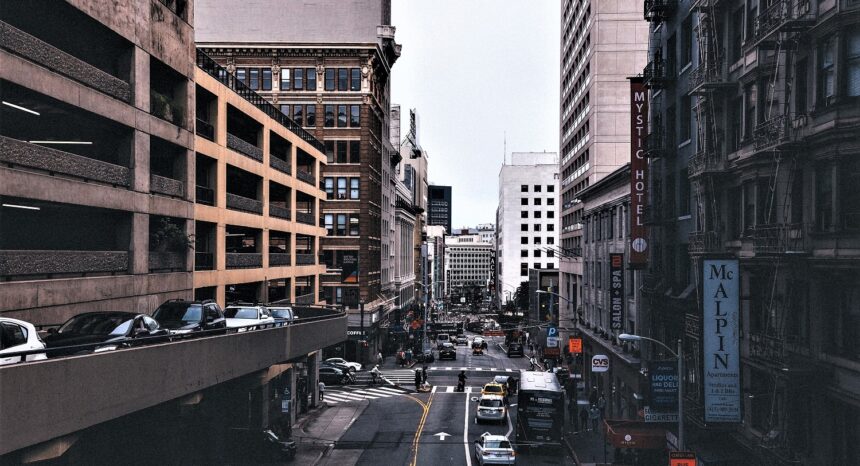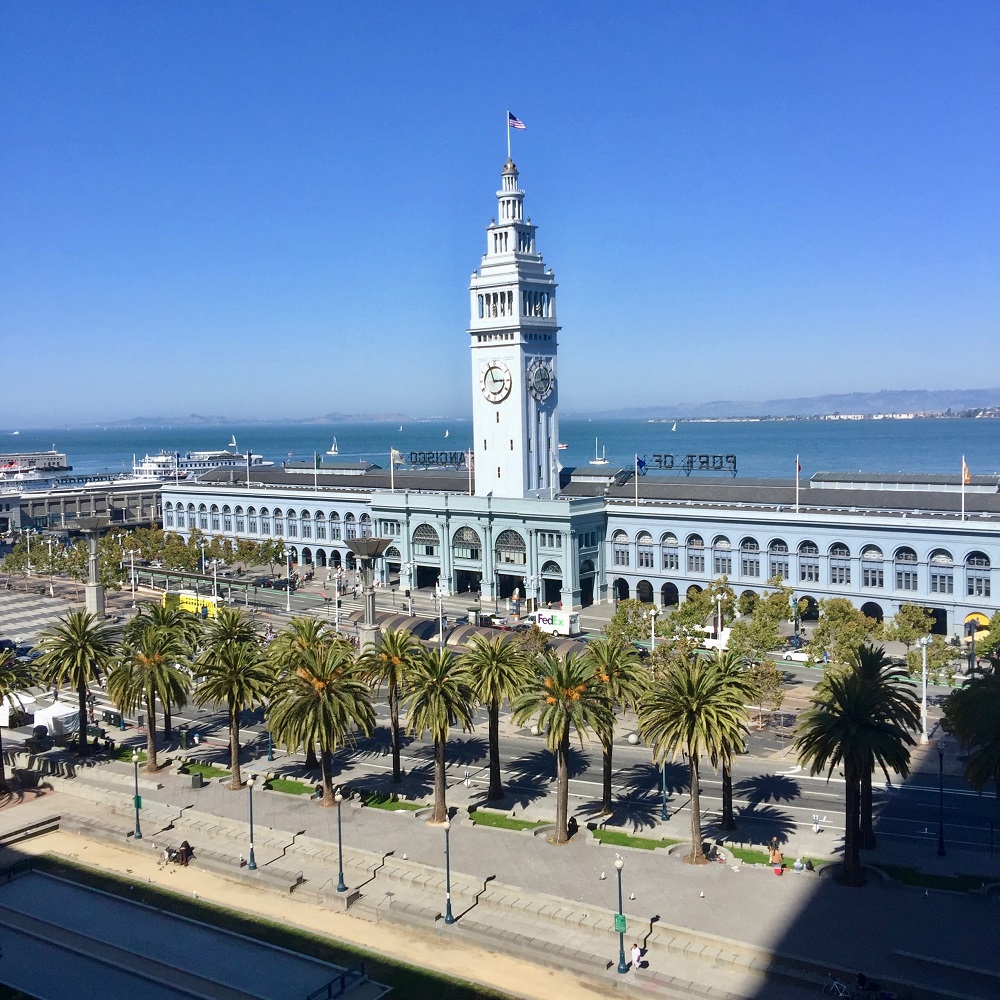Forthcoming research in Urban Studies draws a direct line between dedicated parking spots and the number of cars owned among affordable housing residents in a major American city.
San Francisco residents who joined affordable housing lotteries from July 2015 to June 2018 and secured units with a free parking spot were more likely to have cars, the research finds.
Specifically, lottery-winning residents in buildings that guaranteed one parking spot per unit had double the rate of car ownership of residents in buildings without parking. A building’s parking supply also more strongly predicts car ownership than transit access, according to the research.
“That was surprising,” says Adam Millard-Ball, associate professor of urban planning at the University of California, Los Angeles and one of the paper’s authors. “You might think it doesn’t matter how much parking is in a building because people could park on the street or rent a space down the block. It isn’t something I was expecting — that parking in a building has such a large effect on whether people choose to drive.”
Define affordable
The definition of housing affordability greatly depends on the affordability of a city itself. San Francisco is among the most expensive places to live and has one of the most expensive real estate markets, with median home prices north of $1 million, according to the National Association of Realtors.
Rental prices have fallen over the past year but an average rental in San Francisco still runs about $3,000 each month, according to apartment listing website RENTCafé. Parking isn’t cheap either, with dedicated spots routinely going for hundreds of dollars per month there. That high cost of living means affordable housing is different in San Francisco compared with most other parts of the country.
Eligible households apply to enter city-run lotteries to buy or rent below-market-rate units, with preference given to current or former San Francisco residents. Income ceilings for affordable housing lotteries there are roughly $120,000 for a two-person household — double the median U.S. household income — according to the forthcoming paper. The two-person income cap for an affordable housing rental in Raleigh, North Carolina, by contrast, is about $60,000. Below-market-rate sale and rental prices in San Francisco vary based on type of unit, but it costs $750,000 just to build a two-bedroom affordable housing unit there, according to The New York Times.
Totally random
Parking is part of what transportation planners call the “built environment.” It is what it sounds like: the built environment refers to human-made physical structures that influence how people move and live. Past research has strongly suggested parking supply and car ownership are related.
But as the authors of the new paper point out, it’s been a challenge for researchers to draw concrete, causal conclusions — because of something called self-selection. In this context, self-selection means people may select their transportation modes based on personal preference. Do people live in highly walkable neighborhoods because they like walking, or for other reasons? Do people live in car-centric communities with limited transit access because they prefer driving, or for other reasons?
Put another way, people are not randomly assigned to their homes. As the authors note, “randomized experiments are the gold standard to identify causal effects.” The difficulty in parsing the relationship between where people live and their transportation choices has precluded other researchers from being able to say that changes in parking supply cause changes in car ownership.
San Francisco housing lottery winners, however, are by and large randomly selected. The city is one of several in the country experiencing a well-documented and long-standing affordable housing crisis.
Developers building new apartments there must set aside a percentage of units for people to rent or buy at below market rates, and lotteries often attract many more applicants than there are available units.
Private developers typically have to set aside 12% to 20% of on-site units as below-market-rate, or provide or pay a fee toward off-site affordable units, according to the new paper, “What Do Residential Lotteries Show Us About Transportation Choices?“
“Because of the very low odds of winning, eligible households generally apply indiscriminately to many different housing lotteries,” write Millard-Ball and his co-authors, Jeremy West, Nazanin Rezaei and Garima Desai. Millard-Ball further explains that because of the high cost of housing in San Francisco, if someone wins a below-market-rate unit, they’re likely going to move in no matter where it is in the city and whether or not the building has certain amenities, like parking.
Because transportation and other preferences are not part of the equation, the researchers directly link parking supply and car ownership. They analyze results from their survey of transportation choices and employment among 2,700 San Francisco households that won below-market-rate units across 59 lotteries from 2015 to 2018.
Residents given the chance for a free or reduced price parking spot, usually about $100, were likely to take advantage. And while some research suggests people who own vehicles are more likely to have jobs, the authors of the current study find no relationship between car ownership and full-time employment. They note they conducted their survey in 2019, before the COVID-19 pandemic led to historically high national unemployment rates.
“It is some of the first evidence that there’s no obvious employment downside to not having parking in a building,” Millard-Ball says. While San Francisco is a uniquely expensive place to live, Millard-Ball adds that “there’s something all cities can learn from this: we can’t just write off the effects of the built environment.”
Zone out?
Starting in 2010, San Francisco began phasing out a zoning requirement that units in new buildings each have at least one parking spot. The San Francisco Board of Supervisors completely eliminated parking minimums in 2018. If new construction does include parking spots, residents now often have to pay market rates — hundreds of dollars per month for tenants, tens of thousands of dollars in one-time payments for buyers.
But many cities still require that new apartment buildings have at least one parking spot per unit.
“There is a long history of zoning and parking requirements making it harder to build affordable housing,” Millard-Ball says. “They’re designed with a specific type of household in mind — one that is middle- and high-income, and owns cars and is more likely than not to be white.”
Parking minimums are one element of zoning law that can make it difficult for a city to encourage new affordable housing — because the cost of building parking ups the final bill for housing developments, says Millard-Ball. By one estimate, dedicated parking spots in San Francisco can increase residential per-unit costs by $50,000. The authors of the current paper record a range of parking costs for below-market-rate buyers in their sample, with spaces offered from $33,000 to $138,000.
“Removing parking requirements is pretty much free, and provides savings in construction costs and can make housing cheaper,” Millard-Ball says. “So beginning to abolish zoning requirements for a minimum number of parking spaces to be built — that’s something that can be done at any time.”
Induced / reduced demand
The new paper adds to a lineage of research on what transportation researchers call induced demand — that’s the “if you build it, they will come” line of thinking.
Induced demand happens, for example, when a state decides to add lanes to relieve congestion on a busy highway. Research shows adding lanes or building new roads doesn’t reduce traffic — it makes people drive more. During peak travel times, usually mornings and evenings, traffic swells to meet road capacity in cities. That’s the “law of peak-hour expressway congestion,” a phrase economist Anthony Downs coined in 1962.
Economists Gilles Duranton and Miles Turner confirmed Downs’ law in a 2011 American Economic Review paper by analyzing U.S. highway travel data from 1983, 1993 and 2003, concluding that “increased provision of interstate highways and major urban roads is unlikely to relieve congestion of these roads.”
San Francisco is home to one of the more well-known examples of the inverse of induced demand — reduced demand. The idea is that removing elements of the built environment — such as inner city highways — doesn’t necessarily lead to traffic chaos, it just reduces demand for those transportation modes.
In the 1980s, some San Francisco residents began pushing political leaders to demolish the elevated Embarcadero Freeway, which cut off the eastern waterfront from the city core. Other residents feared that if the freeway were removed, their lives would become marred by snarling traffic and they would lose easy access to other parts of the city.
Then, nature stepped in. In 1989, the Loma Prieta earthquake damaged the freeway, which was taken out of service. Traffic nightmares never materialized. Instead, nearby surface streets absorbed traffic and transit ridership in the area increased 75% during the 1990s, according to research from 2009 in the Journal of Urbanism. The city began demolishing the Embarcadero Freeway in 1991.
“In particular, the Embarcadero teardown opened up access to San Francisco Bay, while a street-car line along the waterfront’s palm-tree lined boulevard brought locals and tourists to restaurants and cultural activities in the formerly isolated, dingy area left in the shadow of the unfinished, double-decked expressway,” wrote the late urban historian Raymond Mohl in the Journal of Planning History in 2011.
The demise of the Embarcadero Freeway also presaged San Francisco’s housing crisis. When the wide and walkable Embarcadero boulevard opened in the freeway’s place in 2000, nearby properties suddenly gained waterfront access. Average values within a one-mile radius increased by tens of thousands of dollars over the five years after the boulevard opened, according to the Journal of Urbanism research.
The forthcoming research in Urban Studies was paid for with a grant from the University of California Institute of Transportation Studies, with funding from California’s Road Repair and Accountability Act of 2017.
Further reading
If you build it, they will drive: Measuring induced demand for vehicle travel in urban areas
Kent Hymel. Transport Policy, April 2019.
A Driving Factor in Mobility? Transportation’s Role in Connecting Subsidized Housing and Employment Outcomes in the Moving to Opportunity (MTO) Program
Evelyn Blumenberg and Gregory Pierce. Journal of the American Planning Association, August 2014.
The Fundamental Law of Road Congestion: Evidence from US Cities
Gilles Duranton and Matthew Turner. American Economic Review, October 2011.
Job accessibility and the modal mismatch in Detroit
Joe Grengs. Journal of Transport Geography, January 2010.
From elevated freeways to surface boulevards: neighborhood and housing price impacts in San Francisco
Robert Cervero, Junhee Kang and Kevin Shively. Journal of Urbanism, April 2009.
Shifting Urban Priorities? Removal of Inner City Freeways in the United States
Francesca Napolitan and P. Christopher Zegras. Transportation Research Record, January 2008.





Expert Commentary